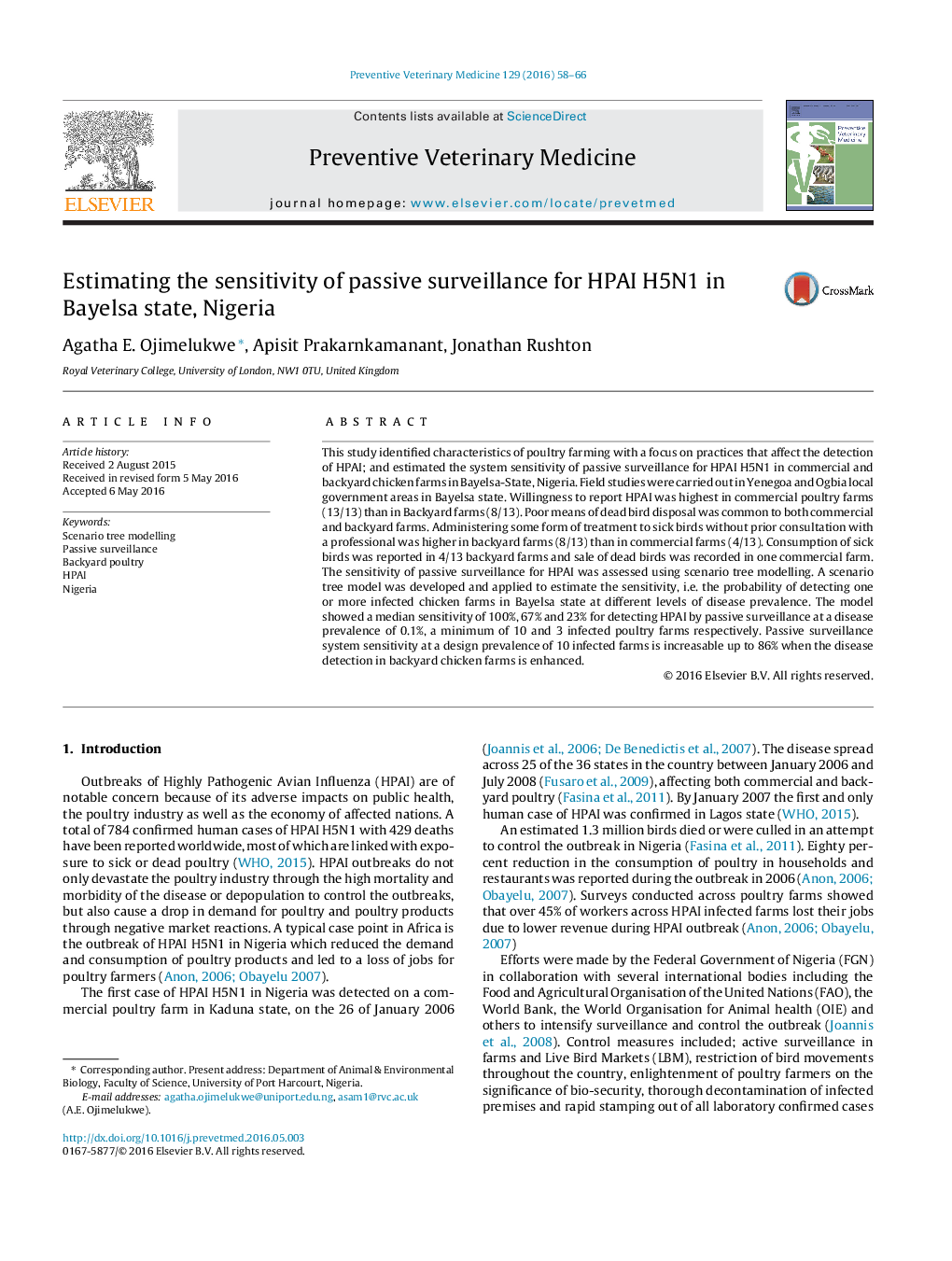| Article ID | Journal | Published Year | Pages | File Type |
|---|---|---|---|---|
| 5792917 | Preventive Veterinary Medicine | 2016 | 9 Pages |
Abstract
This study identified characteristics of poultry farming with a focus on practices that affect the detection of HPAI; and estimated the system sensitivity of passive surveillance for HPAI H5N1 in commercial and backyard chicken farms in Bayelsa-State, Nigeria. Field studies were carried out in Yenegoa and Ogbia local government areas in Bayelsa state. Willingness to report HPAI was highest in commercial poultry farms (13/13) than in Backyard farms (8/13). Poor means of dead bird disposal was common to both commercial and backyard farms. Administering some form of treatment to sick birds without prior consultation with a professional was higher in backyard farms (8/13) than in commercial farms (4/13). Consumption of sick birds was reported in 4/13 backyard farms and sale of dead birds was recorded in one commercial farm. The sensitivity of passive surveillance for HPAI was assessed using scenario tree modelling. A scenario tree model was developed and applied to estimate the sensitivity, i.e. the probability of detecting one or more infected chicken farms in Bayelsa state at different levels of disease prevalence. The model showed a median sensitivity of 100%, 67% and 23% for detecting HPAI by passive surveillance at a disease prevalence of 0.1%, a minimum of 10 and 3 infected poultry farms respectively. Passive surveillance system sensitivity at a design prevalence of 10 infected farms is increasable up to 86% when the disease detection in backyard chicken farms is enhanced.
Related Topics
Life Sciences
Agricultural and Biological Sciences
Animal Science and Zoology
Authors
Agatha E. Ojimelukwe, Apisit Prakarnkamanant, Jonathan Rushton,
